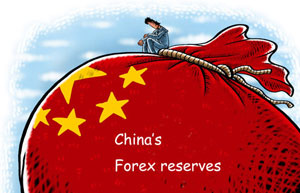Suzhou sits about an hour out of Shanghai, along the corridor that stretches out to Nanjing and represents one of the most heavily populated areas in the world. By no standard is Suzhou a small town.
It is difficult to put exact numbers on the population but according to some estimates, once the migrant population is taken into account, there are about 10.5 million people. The growth has been astounding. In 2000, there were fewer than 1.4 million people in this city famous for its canals.
And yet, Suzhou has plenty of parks surrounded by residential complexes and community shopping areas. These retail clusters are a deviation from the traditional approach most cities in China have taken. This has been to build massive shopping malls in preparation for the inevitable mass of drivers - a model perfected in the US where families have multiple cars and a penchant for driving to a hypermall and shopping at huge retail chains.
"Suzhou has been quite successful in terms of developing the new commercial business district while preserving the historical buildings," says Zhou.
The Suzhou Industrial Park, for example, is an example of long-range planning. The blueprints for the successful park were laid out in the 1990s and the park has grown thanks in large part to investment and planning from Singapore.
All this has helped Suzhou emerge as one of the largest recipients of foreign investment in China, which include multinationals like Procter & Gamble, DuPont, Siemens AG, Bayer AG, Philips Electronics NV and Tata Group.
The city's economic output in 2012 was 1.2 trillion yuan ($190 billion), or 114,000 yuan per capita. That is almost four times larger than the average across China.
Shanghai is the richest city in China with fiscal revenue in 2013 of 410 billion yuan, according to the China Investment Network. Suzhou is in sixth place (behind Beijing, Tianjin, Shenzhen and Chongqing) with revenues of 133 billion yuan.
But arguably, Suzhou is much more livable than any of its richer peers, although "livable city" claims are always debatable, depending on the criteria used. The Chinese Academy of Social Sciences, for example, named Zhuhai, on the southern coast of Guangdong, as the most livable city in China ahead of Hong Kong and Hainan Island.
|
 |
 |
